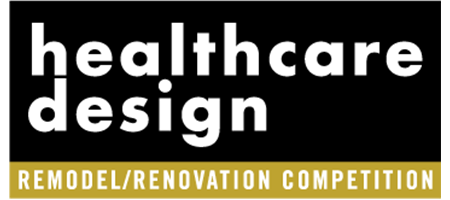
Michele Cohen (Headshot: Courtesy of B+H)
In this series, Healthcare Design asks leading healthcare design professionals, firms, and owners to tell us what has their attention and share their ideas on the subject.
Michele Cohen is principal at B+H Architects, a Toronto-based architecture and design firm.
Here, she shares her thoughts on virtual health and its impact on facility design, adaptive reuse, and using healthcare buildings as community assets.
- Planning for technological advancements
The healthcare industry continues to make rapid advancements. For example, while we can already print simple tissues, one day we’ll be able to 3D-print organs, which will dramatically minimize the chances of such organs being rejected by a patient’s body.
Such technological advancements will dramatically alter how we design healthcare facilities, including devoting less square footage to ambulatory services, such as renal dialysis, day surgery, and clinics, and more to increasingly specialized and technical facilities dedicated to services such as organ transplants. After a transplant, the body may recognize the new organ as foreign and try to reject it. Hospital care allows for close monitoring and timely intervention to manage any signs of rejection. The medications required post-transplant are complex and need careful management by hospital staff to ensure they are effective and to minimize side effects.Designers need to stay ahead of such seemingly far-off developments. Doing so will help us design “loose-fit” buildings, designed with flexibility in mind. These buildings have adaptable spaces and strong infrastructure, allowing them to easily adjust to future technological changes and evolving needs and ensure long-term usability. This might involve flexible HVAC systems, movable walls, and adaptable lighting. Designing spaces with the capability to integrate the latest medical and research technologies is essential. This includes ensuring compatibility with advanced imaging equipment, robotic systems, and bioengineering tools for complex labs.
- Adopting virtual replicas into the design process
Digital twin technology is revolutionizing hospital planning by creating virtual replicas of physical spaces. This enables designers and healthcare administrators to visualize and analyze different scenarios before construction begins. Such technology is a huge long-term money-saver for hospitals, optimizing layouts for efficiency and facilitating better workflow and resource management.
Moving forward, the industry can improve its ability to integrate such visualization tools into the early stages of the design process to test concepts rather than creating mock-ups once a design is largely completed.
- Finding new life for existing assets
Much of the future of healthcare design isn’t about demolishing aging infrastructure and building new but adapting existing assets to meet institutional needs. One scenario is “down tech-ing” or repurposing aging inpatient facilities—buildings that might have single-loaded corridors or low floor-to-floor heights—into ambulatory clinics, administrative offices, education spaces for learners, rehabilitation facilities, or long-term care centers.
Another scenario is “up tech-ing” data centers or corporate offices into patient-facing spaces by utilizing modular architectural solutions to create spaces that can seamlessly adjust to different scales of operation without compromising efficiency or patient care.
- Healthcare buildings as community assets
Healthcare facilities occupy large sections of our cities, but most people, if they’re lucky, will visit them only a few times in their lives. This begs the question: How can hospitals be designed and programmed as integrated community assets that not only care for the sick but support preventive health strategies and strengthen community bonds.For example, can hospital auditoriums and breakout spaces be used for continuing education classes at night, or can large rehabilitation gyms or pools be opened to the wider community?
Security issues related to such ideas are solvable, and it’s time we moved beyond treating hospitals as isolated and self-contained buildings and instead find new ways of transforming them into integrated community assets that positively impact individual and collective well-being.
- Virtual healthcare and advanced technology integration
With telemedicine capabilities, patients can have virtual consultations with providers and benefit from technology such as remote monitoring, which ultimately improves access to care and reduces travel burdens. In the not-so-distant future, patients may no longer need to wait in the emergency department for many hours and could instead be monitored remotely. Real-time patient monitoring sensors are already facilitating continuous observation of vital signs and other health parameters, leading to quicker interventions and enhanced safety.
From a design perspective, remote monitoring means that emergency departments won’t need to be filled with patients who don’t require immediate attention, allowing that space and staff to treat critically ill patients, reducing the burden on hospital staff and improving overall efficiency.
Want to share your Top 5? Contact Managing Editor Tracey Walker at [email protected] for submission instructions.












